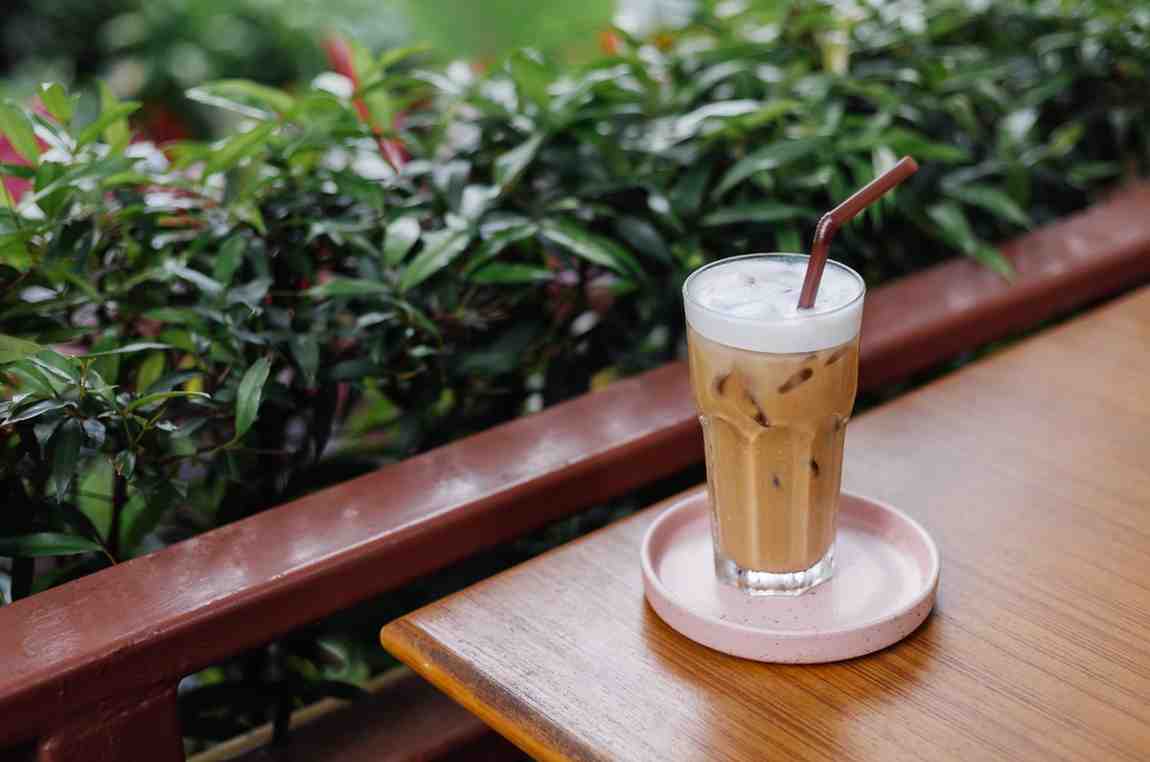Vietnamese iced coffee, known as Cà Phê Sữa Đá, is a beloved beverage that combines strong, rich coffee with sweetened condensed milk and ice. Its unique flavor and preparation method have made it a favorite among coffee lovers worldwide. Let’s dive into what makes this coffee special, how to brew it, and the secrets behind its bold flavor.
What Makes Vietnamese Iced Coffee Different?
Vietnamese iced coffee is distinct due to its ingredients and brewing method. Unlike regular iced coffee, it uses:
- Robusta coffee beans: These beans are known for their higher caffeine content and strong, slightly bitter flavor.
- Sweetened condensed milk: Adds a rich, creamy sweetness that balances the coffee’s bitterness.
- Phin filter: A traditional Vietnamese coffee filter that allows coffee to drip slowly, creating a more concentrated brew.
The phin filter process is almost meditative. Hot water slowly drips through the finely ground coffee, resulting in a syrupy, robust brew. This coffee is then mixed with sweetened condensed milk, creating a perfectly balanced blend of strong coffee and creamy sweetness.
Why It’s Popular
Vietnamese iced coffee’s popularity stems from its unique flavor profile and versatility. It’s easy to adjust the sweetness by adding more or less condensed milk, making it customizable to individual tastes. The combination of rich coffee and refreshing ice makes it ideal for warm climates, offering a satisfying way to cool down while enjoying a caffeine boost.
Understanding the Strength of Vietnamese Iced Coffee
Many people wonder why Vietnamese iced coffee feels stronger than other iced coffee varieties. The reasons lie in its ingredients and preparation:
- Robusta beans: Vietnam is one of the world’s largest producers of robusta coffee beans. These beans contain almost twice the caffeine as arabica, contributing to the coffee’s bold kick.
- Slow drip brewing: The phin filter allows the water to extract more flavor and caffeine from the grounds compared to faster brewing methods. This results in a potent, concentrated coffee.
- Condensed milk: While it sweetens the coffee, the thick condensed milk does not dilute its strength like regular milk might.
The result is a drink that feels powerful and energizing, making it a perfect afternoon pick-me-up. Whether brewed traditionally or with a modern twist using espresso shots, Vietnamese iced coffee packs a punch.
Comparing Cà Phê Sữa Đá and Cà Phê Đen Đá
Vietnamese iced coffee comes in two primary styles:
- Cà Phê Sữa Đá: Coffee with sweetened condensed milk and ice. It offers a creamy, sweet flavor balanced with strong coffee notes.
- Cà Phê Đen Đá: Iced black coffee without milk. This version highlights the pure, unadulterated flavor of robusta coffee, making it ideal for those who enjoy a stronger, less sweet beverage.
Both styles showcase the robusta coffee’s natural intensity, but the addition of condensed milk in Cà Phê Sữa Đá creates a smoother experience.
Thai Iced Coffee vs. Vietnamese Iced Coffee

While both Thai iced coffee and Vietnamese iced coffee are popular Asian coffee drinks, they differ significantly in ingredients and flavor:
- Base Ingredients:
- Vietnamese iced coffee uses sweetened condensed milk.
- Thai iced coffee often incorporates evaporated milk, sweetened condensed milk, and sometimes spices like cardamom or star anise.
- Flavor Profile:
- Vietnamese iced coffee is rich, creamy, and focuses on the bold flavor of the robusta beans.
- Thai iced coffee tends to be sweeter and may have a slight spiced undertone due to the added ingredients.
These differences make each coffee unique. Vietnamese iced coffee is preferred by those who enjoy a strong coffee with balanced sweetness, while Thai iced coffee appeals to those who enjoy a more dessert-like drink.
Similarities Between the Two
- Both drinks are typically served over ice, making them refreshing options in warm weather.
- They both utilize a slow brewing process that emphasizes flavor extraction.
- The use of condensed milk in both drinks creates a creamy texture, although Vietnamese coffee is generally less sweet.
Vietnamese Iced Coffee vs. Espresso: Which is Stronger?
When comparing Vietnamese iced coffee with espresso, it’s important to consider both the brewing method and the flavor intensity:
- Brewing Process:
- Espresso is brewed under high pressure, creating a small, concentrated shot with a rich crema.
- Vietnamese iced coffee is brewed using a phin filter or espresso shots mixed with condensed milk. The slower brewing method extracts more of the coffee’s flavor and caffeine.
- Flavor Intensity:
- Espresso has a bold, complex flavor with a rich, smooth crema.
- Vietnamese iced coffee has a syrupy texture due to the condensed milk and is typically sweeter. However, it can feel just as strong or even stronger due to the high caffeine content of the robusta beans.
Which One to Choose?
- Choose Vietnamese iced coffee if you want a sweet, rich drink that can be enjoyed over a longer period.
- Opt for espresso if you prefer a quick, intense caffeine hit without added sweetness.
Both drinks have their merits, but Vietnamese iced coffee offers a unique experience that combines bold coffee with creamy, sweet flavors.
Traditional Brewing Methods for Vietnamese Iced Coffee
Vietnamese iced coffee can be made in several ways, each offering a slightly different experience:
Using the Phin Filter
The phin filter is the traditional method for brewing Vietnamese iced coffee. Here’s how it’s done:
- Prepare the Coffee: Add 2 tablespoons of coarsely ground robusta coffee to the phin.
- Add Hot Water: Pour a small amount of hot water over the grounds and let it bloom for 30 seconds.
- Fill with Water: Slowly pour more hot water over the grounds until the phin is full.
- Wait: Allow the coffee to drip into the glass containing sweetened condensed milk. This process takes around 5 minutes.
- Stir and Serve: Once brewed, stir the coffee and condensed milk together, add ice, and enjoy.
Quick Method with Espresso
For those in a hurry, using an espresso machine is a faster way to make Vietnamese iced coffee:
- Pull a shot of espresso and pour it over sweetened condensed milk.
- Stir thoroughly until the milk blends with the coffee.
- Add ice and serve immediately.
This method offers a similar flavor but lacks the meditative experience of using the phin filter.
Why the Phin Filter Matters
The phin filter is integral to the traditional Vietnamese coffee-making experience. It slows down the brewing process, allowing the hot water to extract every bit of flavor from the coffee grounds. The result is a rich, syrupy coffee that blends perfectly with condensed milk.
- Control Over Brewing: The phin allows users to adjust the drip rate by loosening or tightening the filter, providing control over the coffee’s strength.
- Portability: It’s small and easy to carry, making it a perfect tool for travel or camping.
- Cultural Significance: Using a phin is a ritual in Vietnamese households, often accompanied by slow conversations and moments of relaxation.
Whether you use the traditional phin or a modern espresso machine, Vietnamese iced coffee offers a unique, enjoyable way to enjoy a refreshing and energizing beverage.
Traditional and Modern Brewing Methods for Vietnamese Iced Coffee
Vietnamese iced coffee can be brewed using traditional methods or modern adaptations. Each approach has its own charm and produces a slightly different flavor profile. Here’s a closer look at the various ways to brew this iconic drink:
Brewing with a Phin Filter
The phin filter remains the most traditional method for making Cà Phê Sữa Đá. This method is preferred for its simplicity and the authentic flavor it produces.
- What You Need: A phin filter, robusta coffee grounds, hot water, sweetened condensed milk, and ice.
- Step-by-Step Process:
- Add Coffee: Place 2 tablespoons of coarse ground coffee into the phin.
- Bloom the Coffee: Pour a small amount of hot water over the grounds and let it bloom for 30 seconds.
- Slowly Pour Hot Water: Fill the phin with hot water and cover with the lid.
- Wait for the Drip: Allow the coffee to drip slowly into a glass with 2 tablespoons of sweetened condensed milk.
- Stir and Serve: Mix well, add ice, and enjoy your coffee.
This process takes about 5 minutes, making it a meditative experience that delivers rich, full-bodied coffee.
Espresso Method for Vietnamese Iced Coffee
If you’re short on time, using an espresso machine can speed up the process while still delivering great flavor.
- What You Need: An espresso machine, robusta or espresso roast beans, sweetened condensed milk, and ice.
- Step-by-Step Process:
- Pull an Espresso Shot: Use a double shot for a stronger flavor.
- Mix with Condensed Milk: Stir the hot espresso with 2 tablespoons of sweetened condensed milk until fully blended.
- Add Ice: Pour the mixture over ice and enjoy immediately.
This method is perfect for making multiple servings quickly. It’s ideal for parties or gatherings when you want to serve Vietnamese iced coffee without the wait.
Key Ingredients for Authentic Vietnamese Iced Coffee

The ingredients are what make Vietnamese iced coffee truly stand out. Using high-quality components ensures a rich and satisfying cup every time.
Choosing the Right Coffee Beans
- Robusta Beans: Traditionally, Vietnamese iced coffee uses robusta beans, known for their bold, earthy flavor and higher caffeine content.
- Why Robusta?: The bitterness of robusta balances perfectly with the sweetness of condensed milk, creating a harmonious flavor profile.
- Alternatives: If robusta beans are too strong, consider using a blend of arabica and robusta for a milder taste.
Sweetened Condensed Milk
- Why It’s Essential: Sweetened condensed milk adds creaminess and sweetness, balancing the strong coffee flavor.
- Choosing the Best Brand: Brands like Longevity and Carnation are popular choices for their rich, thick texture.
- How Much to Use: Start with 2 tablespoons per serving, but adjust to taste. More condensed milk makes for a sweeter, creamier drink, while less allows the coffee’s bitterness to shine.
Importance of Water Quality
- Filtered Water: Using filtered water ensures no unwanted flavors interfere with the coffee’s taste.
- Water Temperature: Hot but not boiling water (around 200°F or 93°C) is ideal for extracting the coffee’s full flavor without burning the grounds.
How to Serve Vietnamese Iced Coffee
The way you serve Vietnamese iced coffee can elevate the entire experience. Here’s how to serve it like a pro:
Presentation Tips
- Glassware: Use a clear glass to showcase the beautiful layers of coffee and milk. This adds a visual appeal that enhances the enjoyment.
- Stirring Tools: Provide a small metal spoon for stirring the coffee, allowing the drinker to blend the condensed milk and coffee to their liking.
- Serving Size: Typically served in small to medium-sized glasses to prevent the ice from diluting the coffee before it’s finished.
Pairing Vietnamese Iced Coffee with Snacks
To fully enjoy the richness of Vietnamese iced coffee, try pairing it with traditional or modern snacks:
- Traditional Pairings:
- Bánh mì: The savory and crunchy texture of a Vietnamese sandwich pairs well with the sweet and strong coffee.
- Spring Rolls: Fresh spring rolls provide a light, refreshing contrast to the richness of the coffee.
- Modern Pairings:
- Chocolate Croissants: The buttery, sweet notes of a croissant complement the bold coffee flavors.
- Fruit Tarts: The acidity of fresh fruit cuts through the sweetness of the condensed milk.
These pairings enhance the coffee’s flavors, making it an even more delightful experience.
Frequently Asked Questions About Vietnamese Iced Coffee
What Ratio Should I Use for the Best Vietnamese Iced Coffee?
The ideal ratio for Vietnamese iced coffee varies based on personal preference. However, a good starting point is:
- Coffee to Water Ratio: Use 2 tablespoons of ground coffee per 4 ounces of hot water.
- Condensed Milk: 2 tablespoons per serving for a balanced sweetness.
- Adjust as Needed: Add more or less condensed milk depending on your desired sweetness level.
Can I Make Vietnamese Iced Coffee Without a Phin?
Yes, you can use alternative brewing methods:
- Espresso Machine: Pull a double shot of espresso and mix with sweetened condensed milk.
- French Press: Brew a strong batch of coffee, then mix it with condensed milk before adding ice.
- Cold Brew Method: Steep coarse coffee grounds overnight, then combine with condensed milk for a smoother, less acidic version.
How Long Does It Take to Brew Vietnamese Iced Coffee?
The brewing time depends on the method:
- Phin Filter: Takes about 5 minutes for the coffee to drip completely.
- Espresso: Takes 1-2 minutes, making it the fastest option.
- Cold Brew: Requires 12-24 hours for steeping, but offers a mellow flavor.
Is Vietnamese Iced Coffee Vegan-Friendly?
While traditional Vietnamese iced coffee uses dairy-based condensed milk, there are vegan alternatives:
- Coconut Condensed Milk: Offers a rich, tropical twist.
- Oat Milk and Agave Syrup: Mix these to mimic the creaminess and sweetness of condensed milk.
- Soy Milk: A thinner option that blends well with the strong coffee.
These substitutes allow those on a plant-based diet to enjoy the unique flavors of Vietnamese iced coffee.
Tips and Tricks for Perfect Vietnamese Iced Coffee
Achieving the best cup of Vietnamese iced coffee takes practice. Here are some expert tips to elevate your brewing:
Choosing the Right Grind Size
- For Phin Filters: Use a coarse grind similar to sea salt. This prevents the filter from clogging and ensures a smooth drip.
- For Espresso Machines: Use a fine grind, similar to table salt, for optimal extraction.
Adjusting Sweetness Levels
- Customize the Sweetness: Add more condensed milk if you like it sweeter or reduce it for a more robust coffee flavor.
- Half-and-Half Method: Mix condensed milk with a little regular milk or half-and-half to reduce sweetness while maintaining creaminess.
Preventing a Bitter Taste
- Control the Drip Rate: Adjust the phin’s filter to ensure a steady drip. Too fast, and the coffee will be weak; too slow, and it may become bitter.
- Avoid Overheating Water: Hot but not boiling water prevents the coffee grounds from burning, preserving the natural flavors.
Adding Flavor Variations
- Vanilla Extract: Adds a warm, aromatic twist.
- Cocoa Powder: Mix in a small amount for a mocha-style Vietnamese iced coffee.
- Spices: A pinch of cinnamon or cardamom can elevate the flavor.
These tips help refine your coffee-making skills, ensuring each cup of Vietnamese iced coffee is perfectly brewed.

